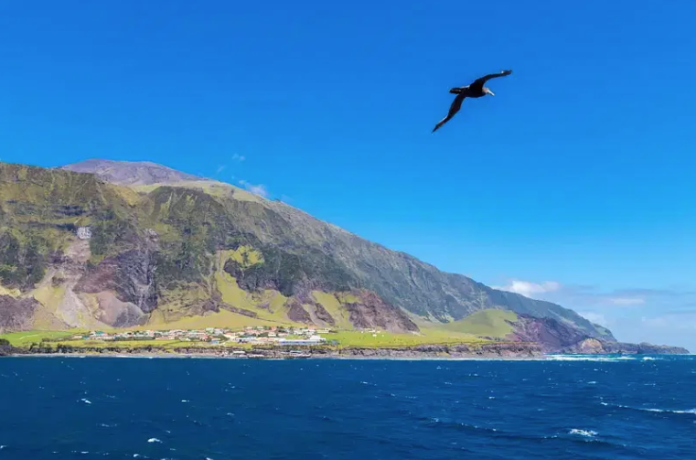Tristan da Cunha is the name of a distant island. Known as one of the most remote places on Earth, this island is quite unique compared to others. Scientists believe that this island was formed through the breakup of a vast continent or supercontinent. Tristan da Cunha is an island in the South Atlantic. It was formed due to the breakup of the ancient supercontinent Gondwana.
The island of Tristan da Cunha is home to 250 people. It is known as the most isolated human settlement in the world. Under British rule, the inhabitants of this island are called the “Edinburgh people of the seven seas.” Tristan da Cunha is made up of six volcanic islands. Located 1,500 miles southwest of the British outpost of Saint Helena, this island’s main island spans about 7.5 miles. The island features a cone-shaped volcano called Queen Mary’s Peak, which rises 6,765 feet above sea level. In the crater at the center of the volcano is a heart-shaped lake, which turns to ice in winter and becomes liquid in summer. The island is considered a paradise for wildlife and researchers. The shoreline is a breeding ground for seals, albatrosses, and northern rockhopper penguins.
The six islands of Tristan contain evidence of past geological activity from Earth’s crust. All the islands are formed from the peaks of the oceanic crust. This area is located at the junction of the Eurasian (Europe and Asia) and African tectonic plates. Over time, these plates gradually move apart, and molten rock bubbles up through the gaps. Tristan Island was formed as a result of magma flows coming from deep within the Earth. The island has experienced various changes to its surface over time. Around 132 million years ago, this area was formed between South America and Africa. The breakup of the ancient continent Gondwana led to the development of South America and Africa.
Source: LiveScience












